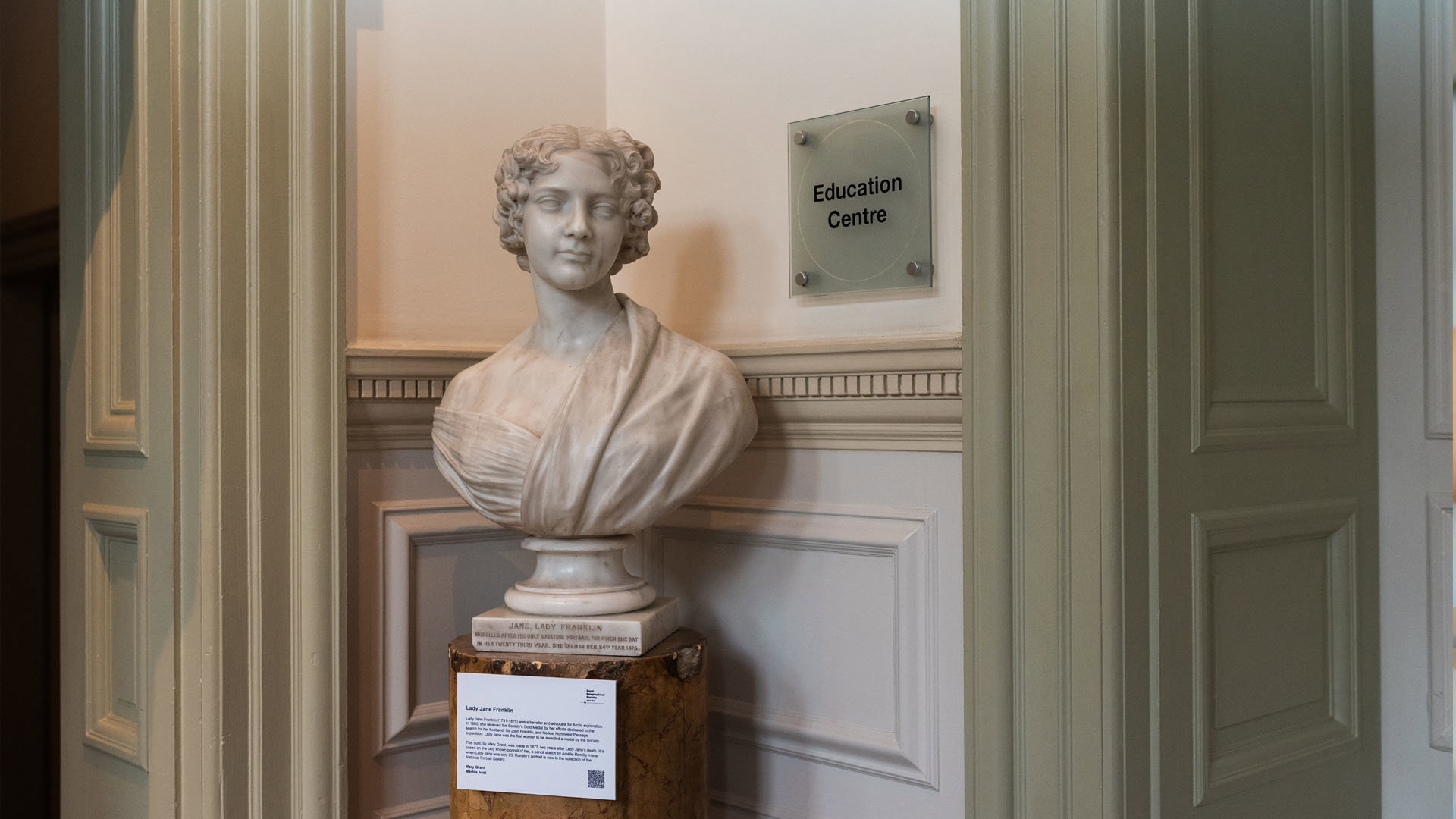Born into a wealthy and well-educated family, Jane (1791-1875) travelled Europe with her father. The family was friendly with John Franklin, who was already well known for his overland Arctic expeditions (1819-1822 and 1825-1827).
Three years after the death of John's first wife, Eleanor (in 1825), Jane married John in 1828. Lady Jane accompanied her husband on his assignments, using them as opportunities to travel in company with her niece, Sophia (Sophy) Cracroft. When he was lieutenant-governor of Van Diemen’s Land (Tasmania), she visited Australia, Aotearoa/New Zealand, as well as Tasmania itself.
Recalled in 1844, Sir John was then chosen to lead the Admiralty’s latest attempt to find the Northwest Passage. The Erebus and Terror left England in 1845—they never returned.
Lady Jane took on the challenge of organising a search for her husband and his men. She fitted out five ships between 1850 and 1857. These included the Fox, commanded by Captain Leopold McClintock, which found definitive evidence which outlined the demise of both crews.
The first woman to win the Society's Gold Medal
The Society was impressed by Lady Jane's tenacity, fundraising, and coordination skills which led to significant advances in Western knowledge of the Arctic and, ultimately, the successful navigation of the Northwest Passage.
Lady Jane was awarded the Society’s Gold (Founder’s) Medal in 1860, the first time the Society had recognised a woman with such an honour.

The Journal of the Royal Geographical Society, vol. 30 (1860), acknowledged her ‘noble and self-sacrificing perseverance in sending out, at her own cost, several searching expeditions, until at length the fate of her husband has been finally ascertained’ (xciv).
Lady Jane continued to travel, visiting Utah, Brazil, Italy, India, Japan, and Hawai’i, among other destinations. She died in London in 1875. Her coffin was carried to Kensal Green cemetery by six naval officers, veterans of the search for the Northwest Passage.
Mary Grant's bust of Lady Jane
The bust of Lady Jane in our Collections was made by Mary Grant in 1877, two years after Lady Jane’s death. It is based on the only known portrait of Lady Jane, a pencil sketch by Amélie Romilly made when her sitter was only 23. Romilly’s portrait is now in the collection of the National Portrait Gallery.
Further readings
Baxter, Peter. After the Lost Franklin Expedition: Lady Franklin and John Rae. Barnsley: Pen & Sword History, 2019.
Franklin, Jane. The Life, Diaries and Correspondence of Jane Lady Franklin 1792-1875. Edited by W. F. (Willingham Franklin) Rawnsley. Cambridge: Cambridge University Press, 2014.
McGoogan, Ken. The Ambitions of Jane Franklin: Victorian Lady Adventurer. London: Allen & Unwin, 2013.
Middleton, Dorothy. "Franklin [née Griffin], Jane, Lady Franklin (1792–1875), traveller and promoter of Arctic exploration." Oxford Dictionary of National Biography.

